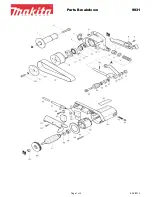
- - - - - - - - - - - - - - - - - - - - - - - - - - - - - - - - - - - - - - - - - - - - - - - - - - ▲
I
NSTRUCTION
M
ANUAL
3601 E. 34th St. Tucson, AZ 85713 USA Tel. +1 520-882-6598 Fax +1 520-882-6599 email: [email protected] Web: http://www.metallographic.com
Please read this instruction manual carefully and follow all installation, operating and safety guidelines.
NANO 2000T Polisher
4.4 Metallographic Specimen Preparation Basics
A typical metallographic specimen preparation consists of the following basic steps:
Preparation Stage
Purpose
Initial documentation:
To document the initial condition of the sample,
To map the sample surface,
To highlight the area of interest.
Sectioning / cutting:
To reduce the size of large samples and to sample the
specimens close to the area of interest.
Rough, or planar grinding
(refer to Section 4.4.1):
To obtain a planar surface,
To remove sectioning damage,
To approach the area of interest.
Rough polishing (refer to
Section 4.4.2):
Ideally to remove all the subsurface damage and microstructural
damage produced during cutting and rough grinding (Superficial
scratches may still be present after this step).
Final polishing (refer to
Section 4.4.1)::
Generally, more for cosmetic purposes than for removing
microstructural damage. In most cases, this stage should be
minimized to avoid overpolishing and distorting the
microstructural features.
Etching:
To enhance microstructural features such as grain boundaries,
grain size, phase differences, etc.
Examination:
A variety of examination techniques are used in metallography,
including: optical microscopy, electron microscopy and hardness
testing.
10















































